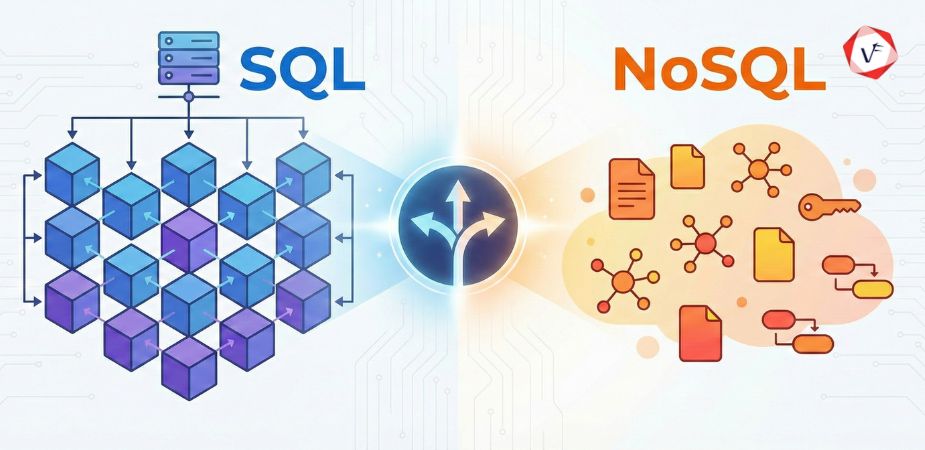- September 26, 2023 6:01 am
- by Aruthra
- September 26, 2023 6:01 am
- by Aruthra

The implementation of most modern technology across every level of an organization is known as "digital transformation," and it has a significant impact on both how a business operates and the value it provides to its customers. In simple terms, it involves altering how a firm connects with its clients and how it offers clients an identical experience regardless of when or where they require it.
Technology is enhancing everyday life while also facilitating work in numerous industries. A firm may prosper in the future by undergoing digital transformation in order to maintain up with changing customer needs. It makes it possible for companies to establish themselves with greater efficacy in a market that is changing quickly due to technological improvements. Companies can gain economic and productivity benefits with efficient management of digital turnaround.
In the wake of the pandemic, we are moving towards a different paradigm. Businesses that design intelligent client journeys and encounters that improve or complement everyday life for individuals are going to flourish. Companies that don't try to profit from breakthrough AI technology and don't take opportunity will fail to perform.
One of the most significant advantages of digital transformation is the capacity to automate labor-intensive operations. Operations that previously required the time and focused effort of your team can now be completed by solutions like Robotic Process Automation (RPA).
Executives who create digital transformation initiatives do so explicitly to enhance the customer experience, according to 92% of them. Task automation may enhance customer and employee experiences in a variety of ways. Customers are now able to utilize your services and support through their most convenient manner of engagement thanks to digital transformation. To make it easier for customers to use your services, you may additionally utilize digital tools and procedures.
Software-driven processes make it possible to see more clearly what functions well and what needs to be modified. Digital tools assist managers in easily recognizing trends and spotting possibilities for growth since they can gather and evaluate data in real time.
The flexibility to let go of outdated tools and adopt cutting-edge, scalable alternatives is another benefit of digital transformation. Numerous current corporate procedures are based on outdated platforms that demand manual input. These areas become delays in processes when teams are overloaded with work. As more workers are required to process disputes and service requests or carry out other tasks, some manual methods are just not scalable.
The technology and procedures that businesses have been depending on for years may not be adequate as they seek to develop and expand. It is challenging and expensive to back up, manage, and safeguard data that is locked in outdated systems. These systems are also more susceptible to malfunctioning and digital threats.
Some of the challenges digital transformation faces the most
Making internal processes simpler and more effective is the main objective of a process transformation. By reevaluating present tactics, a business that is undergoing a process transformation seeks to decrease transit time, costs, errors, and intricacy. Making simpler or eliminating phases, enhancing reporting, and reducing entering errors are all possible outcomes. A successful process transformation requires an assessment of the business's current software.
A more fundamental method of digital transformation than process transformation is business model transformation. In this case, a business is trying to modernize a portion of its operations by digitizing a good or service previously provided in a different format. Typically, a business model transformation occurs when leaders recognize an opportunity to alter how consumers behave.
A cultural or organizational transformation will typically have a big impact on the business and might be challenging to accomplish because it may necessitate significant personnel change. A recent acquisition or an evolution in leadership may cause an organization to undergo a cultural or organizational makeover. A corporation could go through a cultural or organizational shift as a result of unfavorable conditions like litigation or a poor reputation in the field.
The field of domain transformation is one where we observe very little attention but huge possibilities. Products and services are being redefined by new technologies, which are also eliminating industry borders and giving rise to whole new unconventional opponents. The very real potential for these new technologies to open up entirely fresh markets for their firms beyond those that they already handle is something that many executives fail to recognize.
A plan of action outlining how a company must competitively reinvent itself in the digital economy is known as a digital transformation strategy. Successful companies operate in ways that evolve with changing consumer habits. They use developing technologies, innovate, and alter business and operational methods.
Utilize and capitalize on digital technologies that have been shown to be productive and efficient. It increases public awareness of your business, product, and organization. Finding the appropriate digital technologies is crucial since it will help you draw in prospective customers and clients who are eager to use the new platform and enhanced digital technology of your business.
Security is frequently valued but rarely given top importance. This might result in systemic flaws. A CIO or CEO cannot disregard the likelihood of numerous infections and cyber events occurring given the size of the digital world. Ensure that the business's data and information are properly safeguarded and protected. A breach of privacy that affects several of your company's activities is not something you would want to happen.
There is no justification for delaying the expenditure of financial resources on system creation and investigation that can lead to increased success. If one does not consider how technology could be improved and help the overall firm, it is unlikely to become an effective tool. IT systems can be adequately maximized and optimized with the help of research and development. Creativity and innovations may be seen during the process.
You can benefit from the adaptability and improved digital vision that the revolution in technology has to offer. It would be much simpler and smarter in the long run for matching appropriate people with suitable positions if you choose to apply this technological vision when employing staff from every other division.
In order to ease the burden on the workforce of humans, a digital system is created to assist and carry out daily duties and functions that robots could handle. More work can be produced in a shorter amount of time. Verify that digital systems adhere to specified user-friendly requirements. To put it another way, be sure the use of digital technology is justifiable.
In order to implement new digital infrastructure, it is necessary to hire new employees and upskill current ones. You can design programs to train existing staff to carry out duties relating to their jobs. For software-related abilities, it is advisable to hire professional people, as training present workers may take a while.
Multiple platforms and methods can be used to promote training cultures. A training website with filmed webinars and written courses should be made available to help newcomers. Additionally, you can set up hybrid meetings to gather all the IT industry professionals in one location for thorough employee training.
To assist them in their digitalization process, several organizations hire consultants in digital transformation. Minimizing time and achieving the best results with the least amount of danger are two advantages of consulting specialists. Digital transformation consultants analyze your objectives and financial resources, pinpoint your company's pain areas, and then produce precise strategies for you to carry out. Since they are professionals in planning, there is very little risk that their plans will fail. Hiring digital transformation experts may be a wise move if you are not yet prepared to create your own digitalization strategy.
Digital transformation platforms are tools that let firms use technology and inventive concepts to strengthen their competitive position. These platforms integrate different technologies into one system to achieve a certain objective. Planning the change itself is just as crucial as selecting the best digitalization platform. While the appropriate tool can help you stand out, picking the incorrect one can have detrimental financial and tactical effects.
Putting your attention on creating a solid digital foundation is another crucial tactic. This necessitates making the appropriate infrastructure investments in hardware and software. It also entails making the appropriate people an investment. A smart method to support a strategy for digital transformation is to invest in tech learners. The main benefit of the approach is that it provides workers with digital skills that are suited to their positions.
Establishing an innovative culture within your firm is another important strategy. This involves motivating staff members to be innovative and take calculated risks. Businesses may stay ahead of the competition while continuing to enhance their goods and services by creating an environment where staff members are encouraged to try new things and come up with innovative concepts. Furthermore, encouraging collaboration and cross-functional teamwork can assist staff members in information sharing and mutual learning. This may inspire even more creative approaches and solutions.
When attempting such a transformation, you must have a digital transformation strategy in place. The most creative, adaptable, and well-known businesses see digital as integral to who they are rather than just another task to be completed or an item to create. In fact, technology is a significant factor in all corporate achievements. However, The most solid foundation depends heavily on human cognitive abilities and human ability, disregarding the benefits that the technological revolution offers organizations.
The management, employee, and customer responses all have a role in how digital innovation is defined as growing. In the end, technology isn't the only thing that benefits us. but the strategy as well. The strategy's focal point is the client. Delivering the same thing for everyone is no longer profitable because personalization is a significant factor in today's consumer culture. Businesses can only grab customers' curiosity, encourage conversion, and cultivate trust by designing items to meet their needs. In addition, organizations can automate product customization and even carry out operations remotely due to modern tools like artificial intelligence. This allows for the virtual control of production systems and the continued operation of critical infrastructure.
Guaranteed Response within One Business Day!

What is Digital Twin Technology?

What are WebAssembly (WASM) Applications?
Code Review Best Practices: Complete Guide for 2026

Database Selection Guide: SQL vs NoSQL
AI Agents in Enterprise Software: How Autonomous AI is Transforming Business Operations